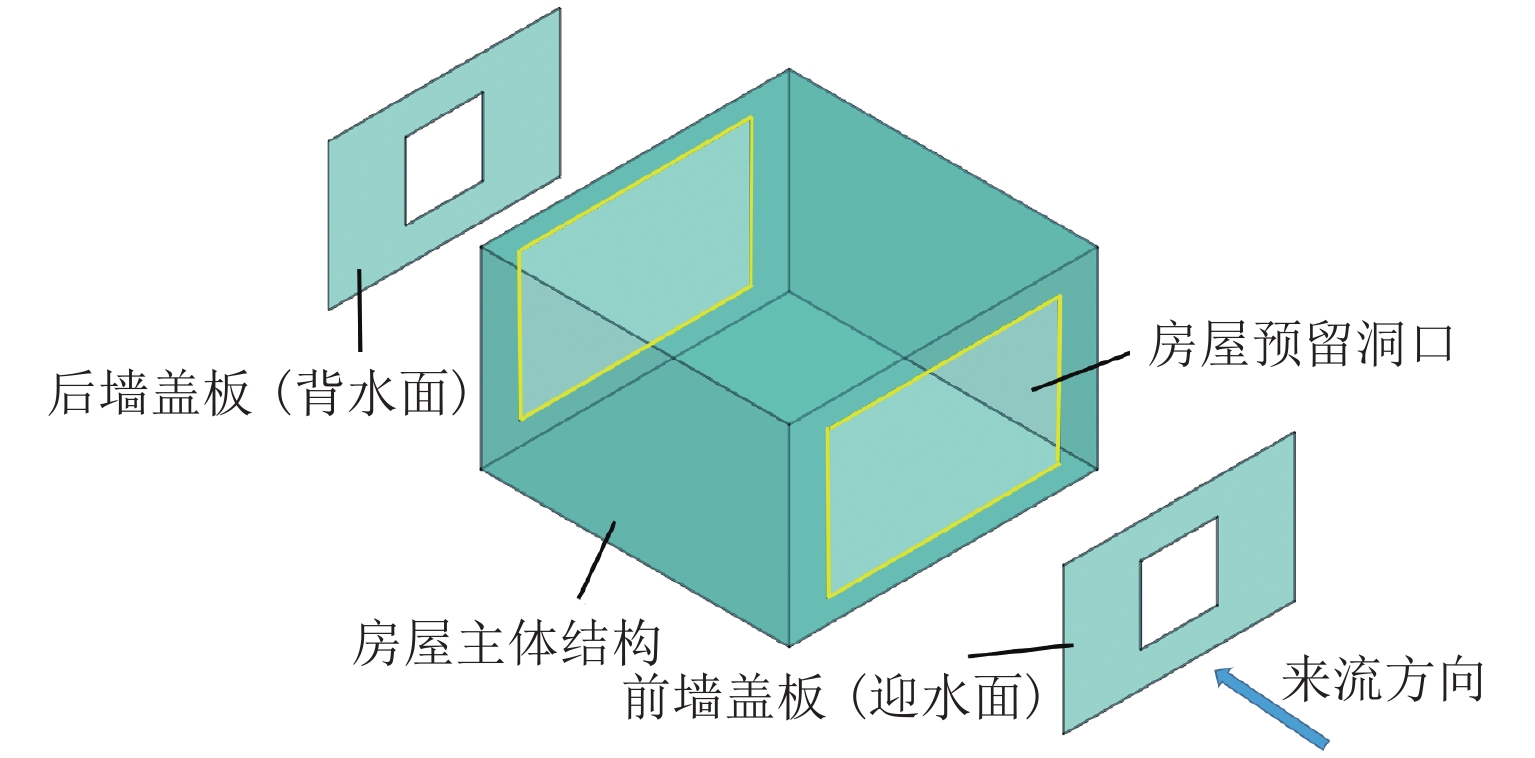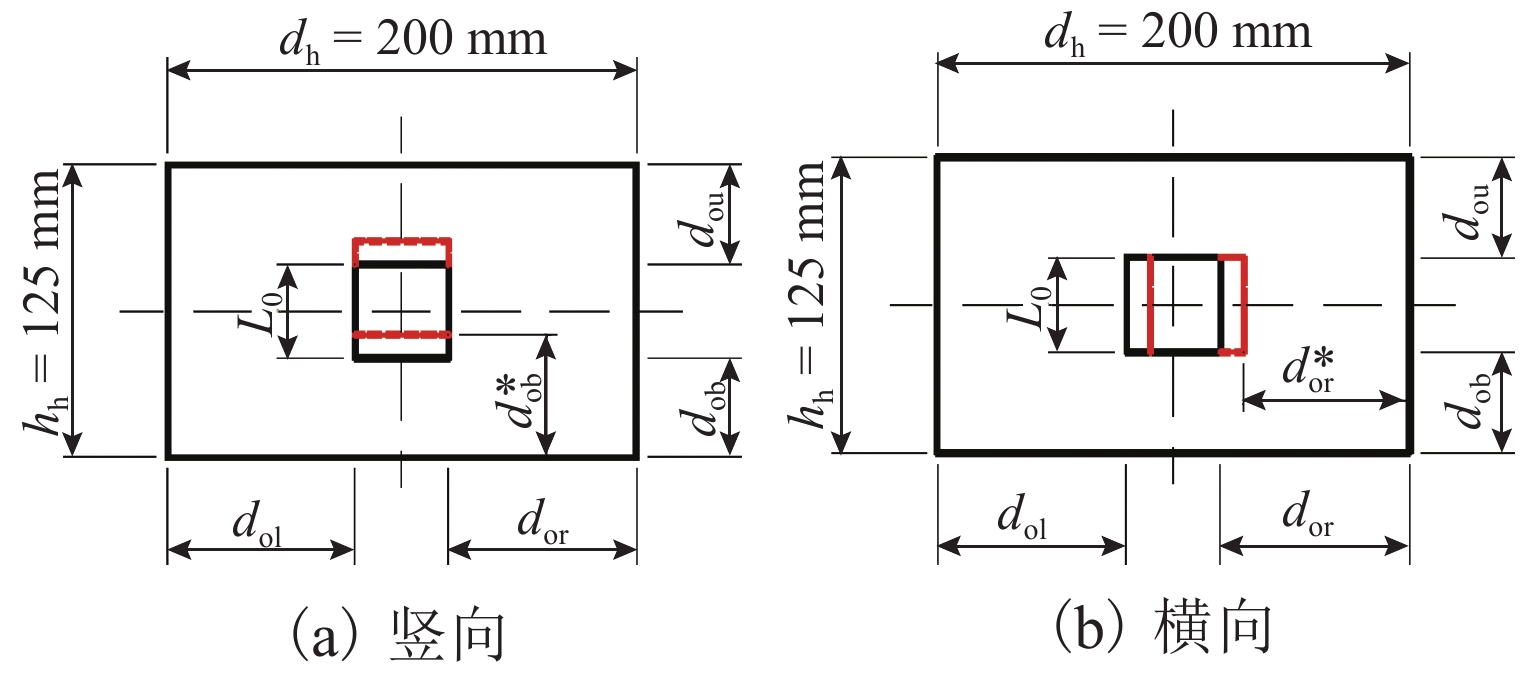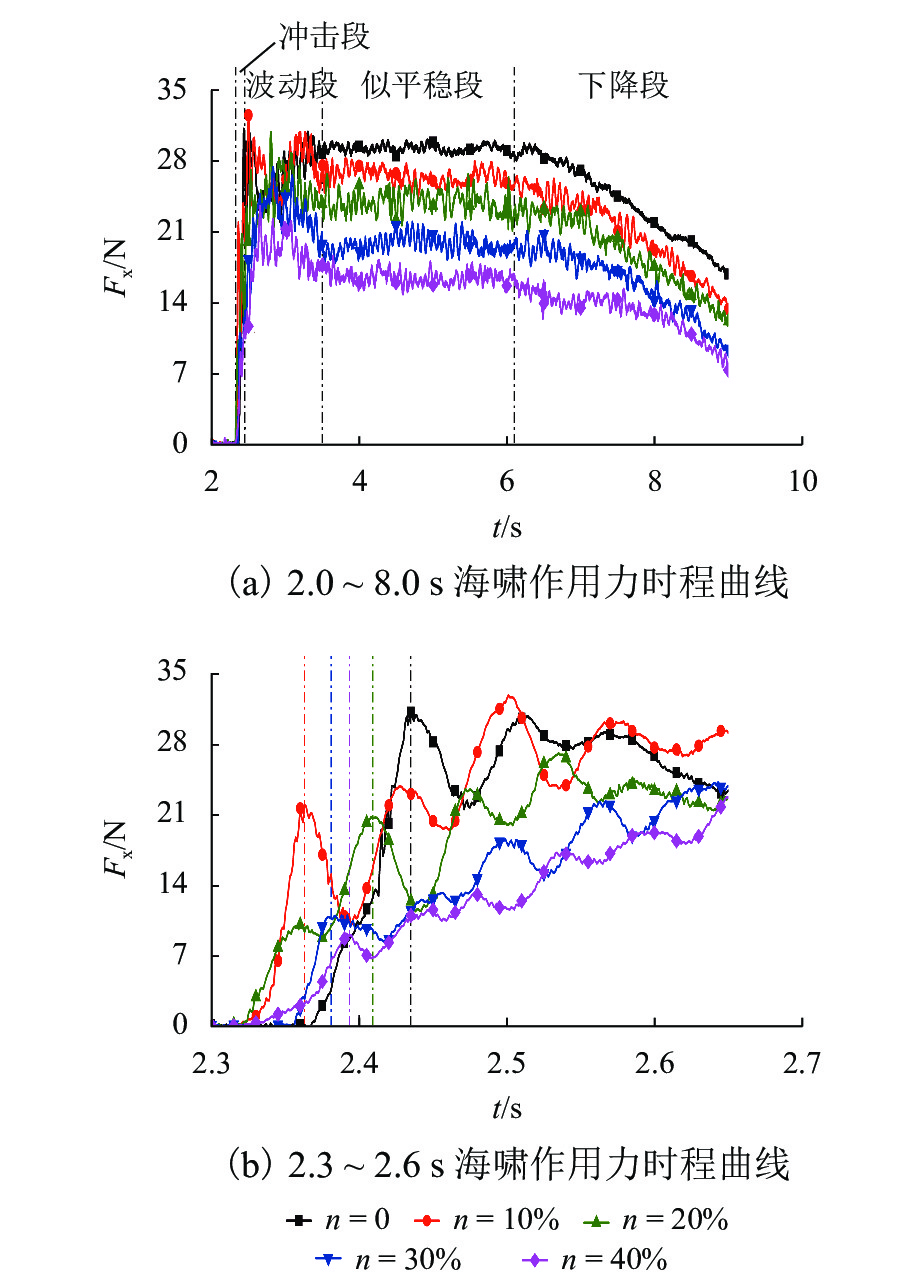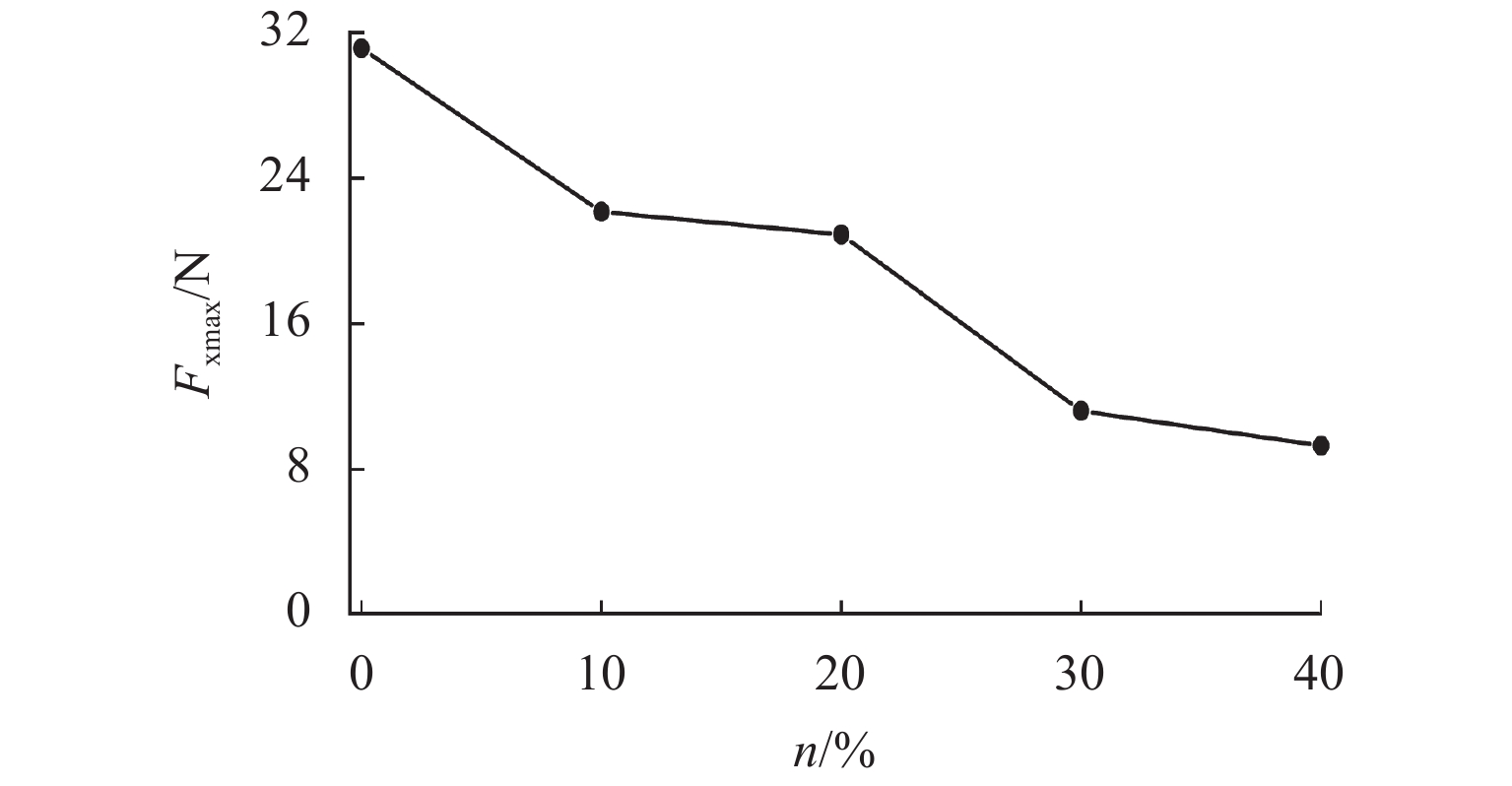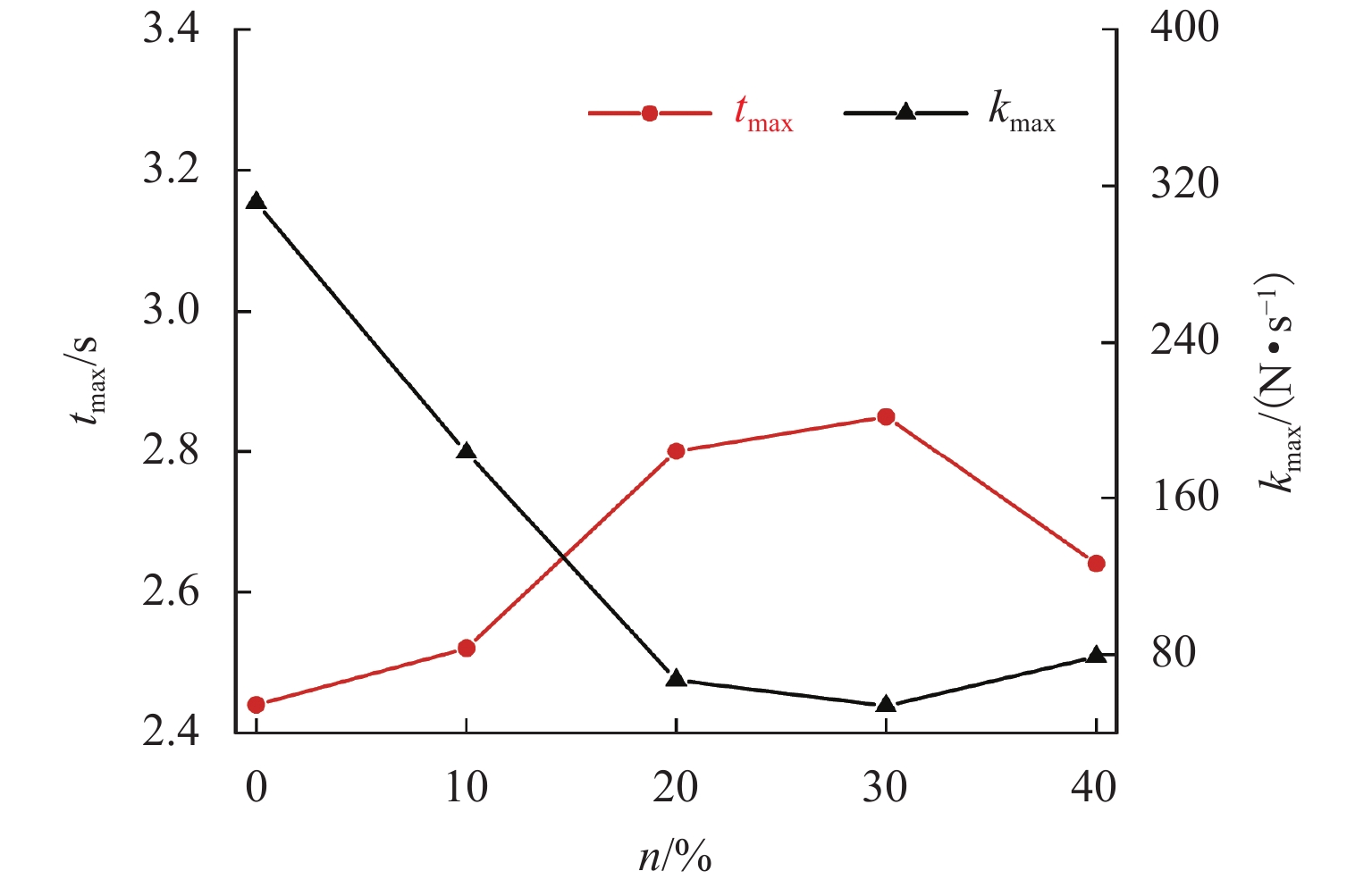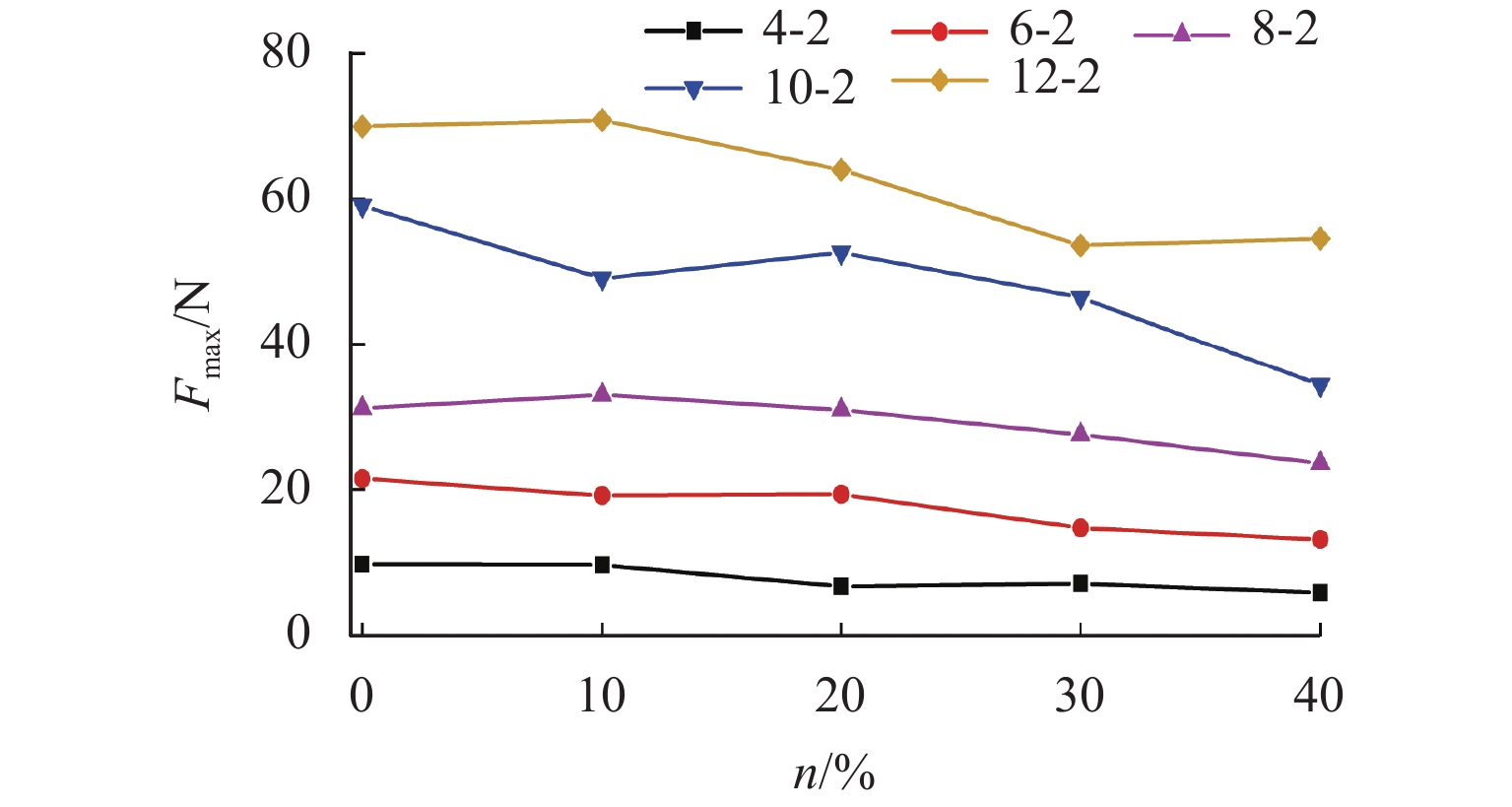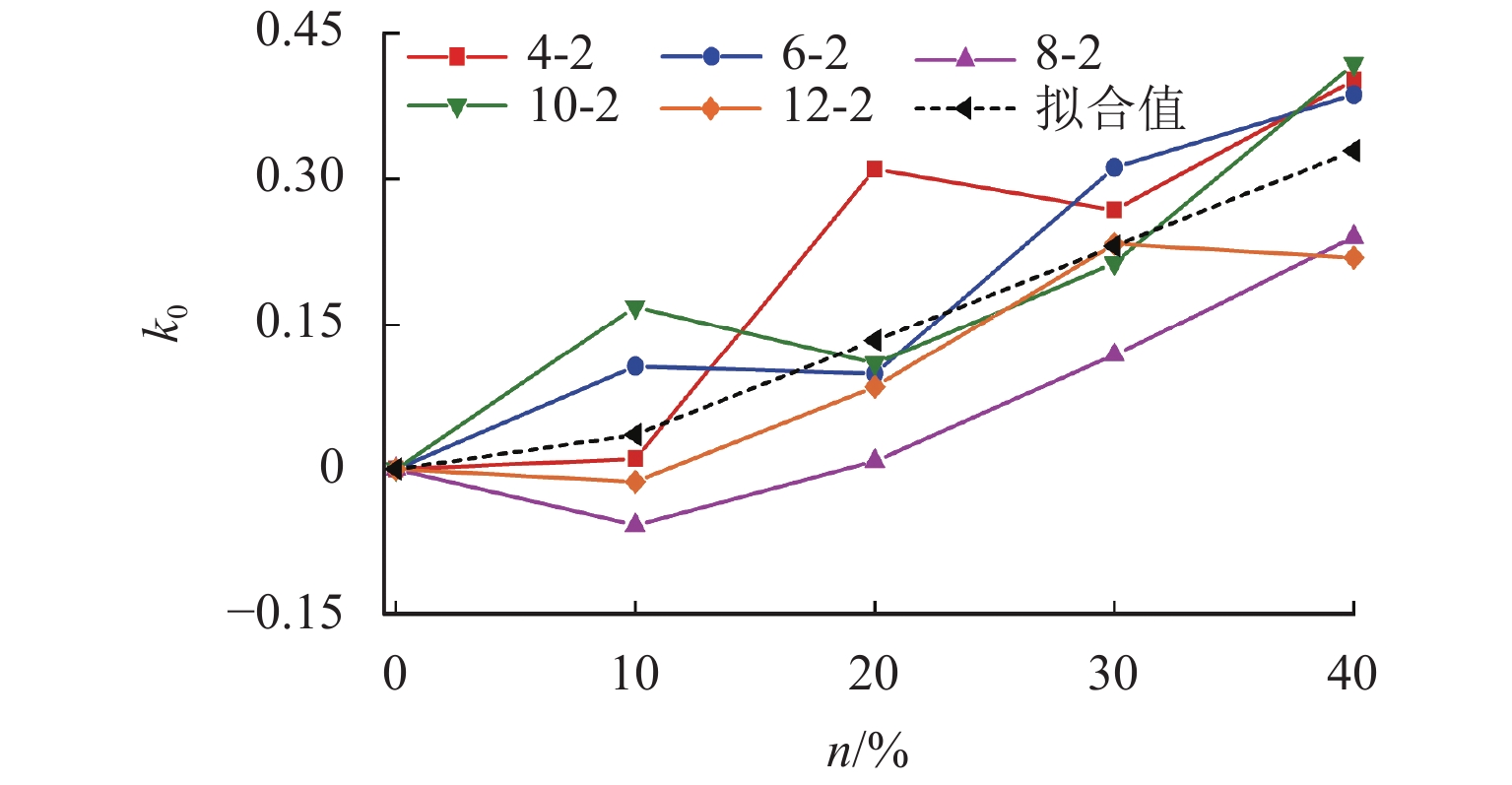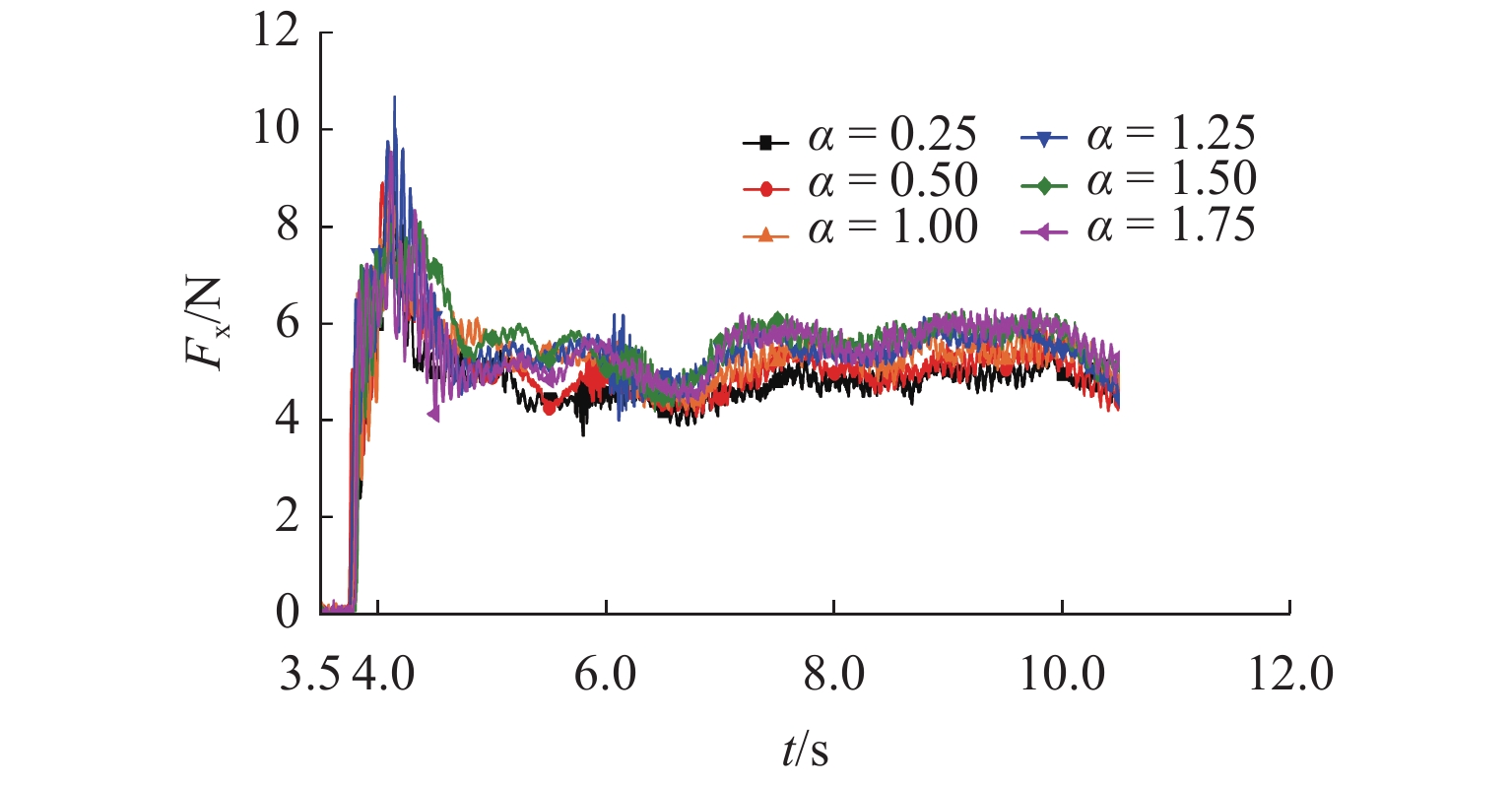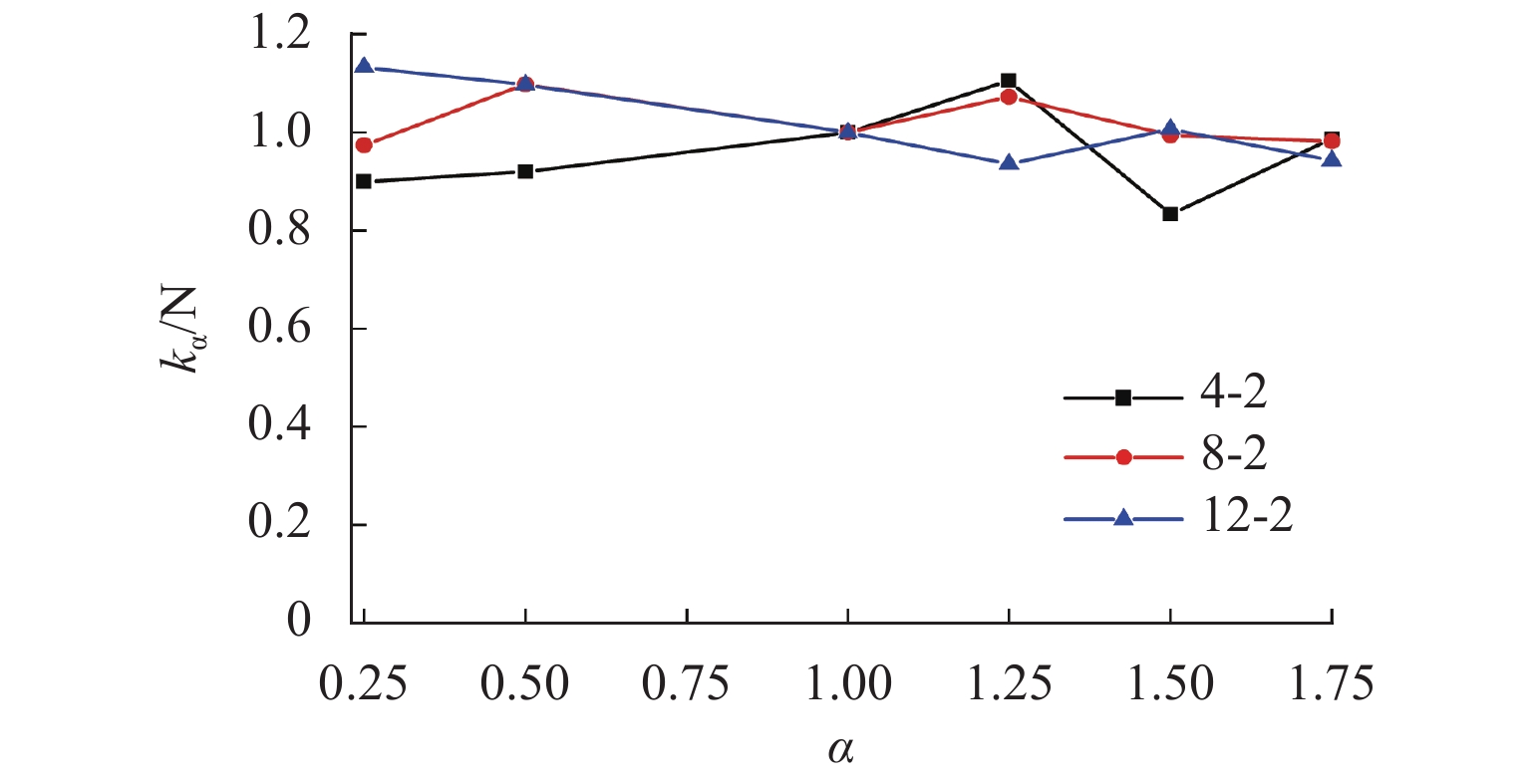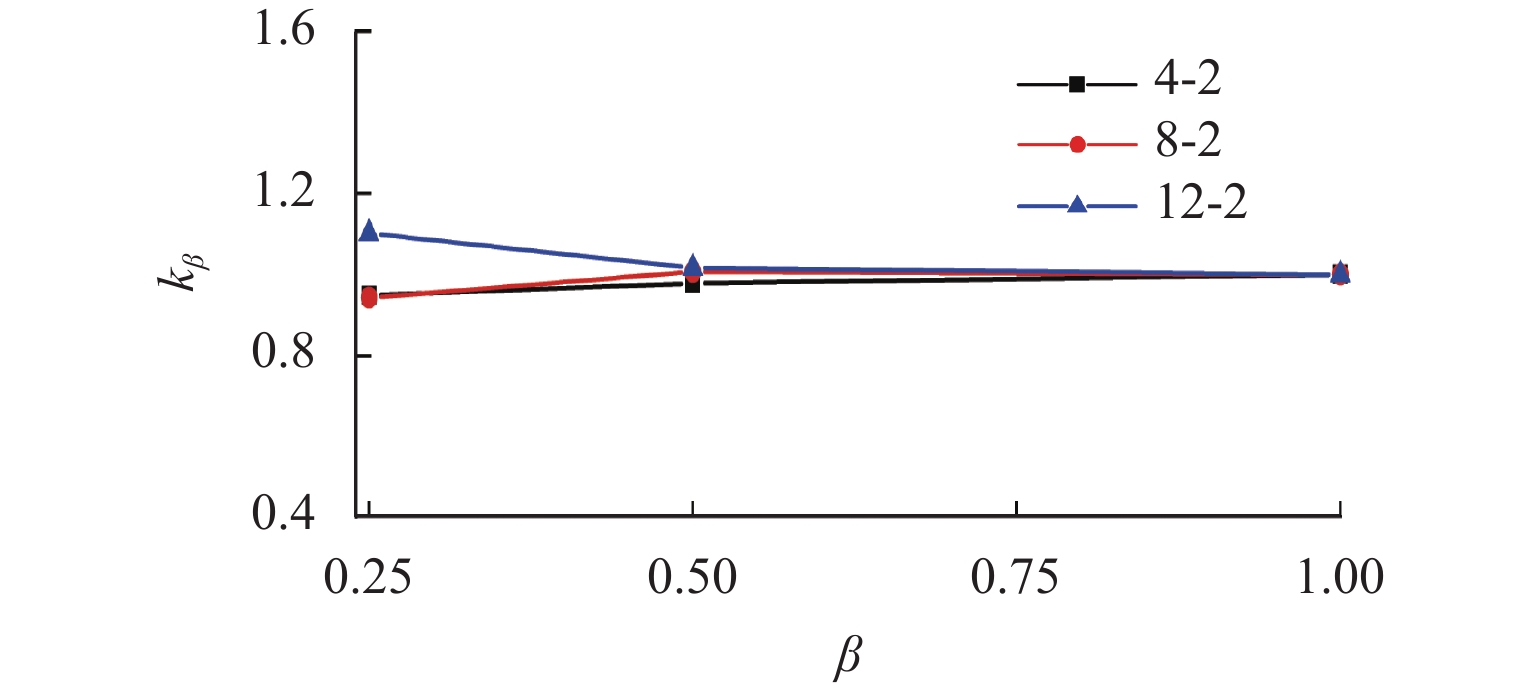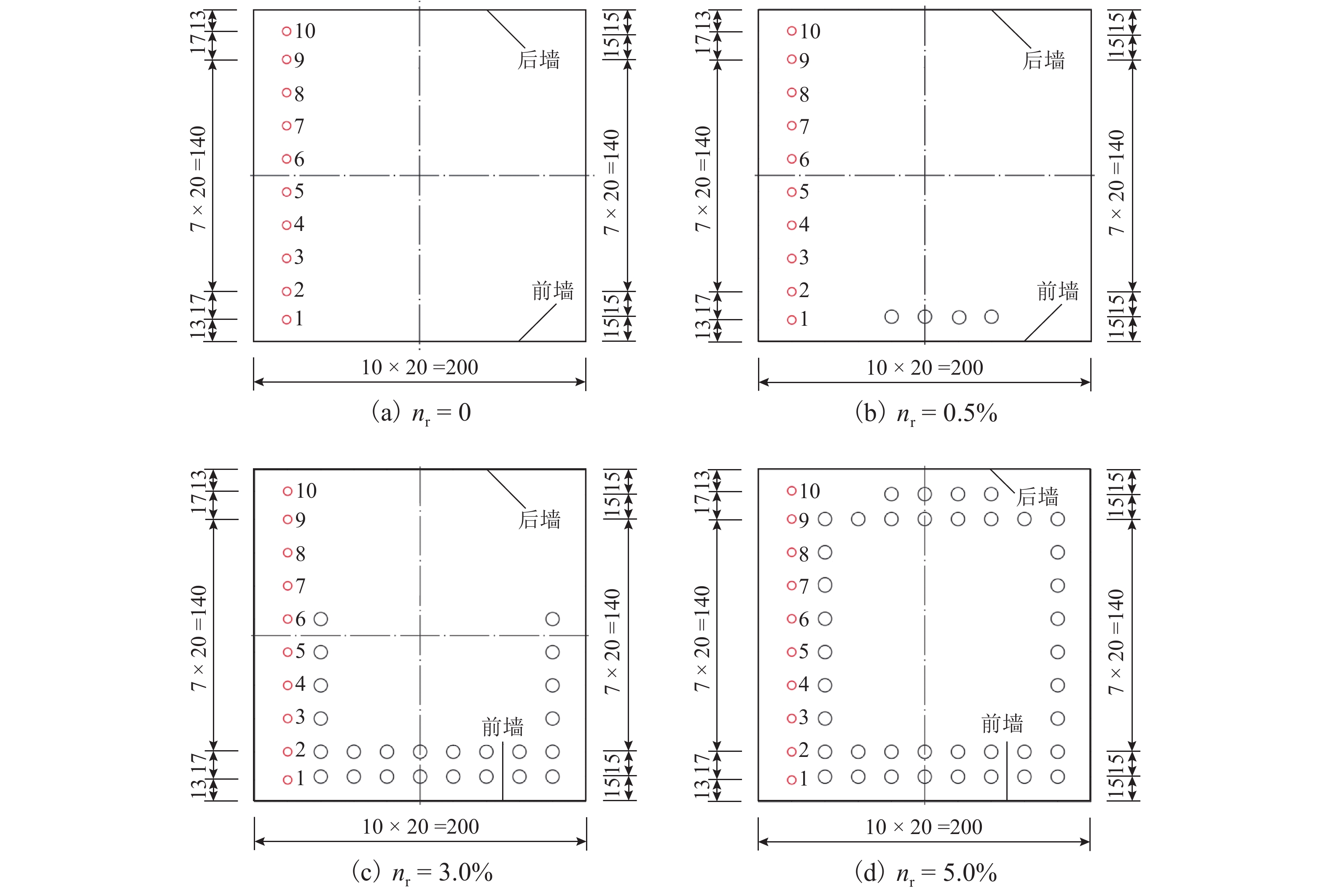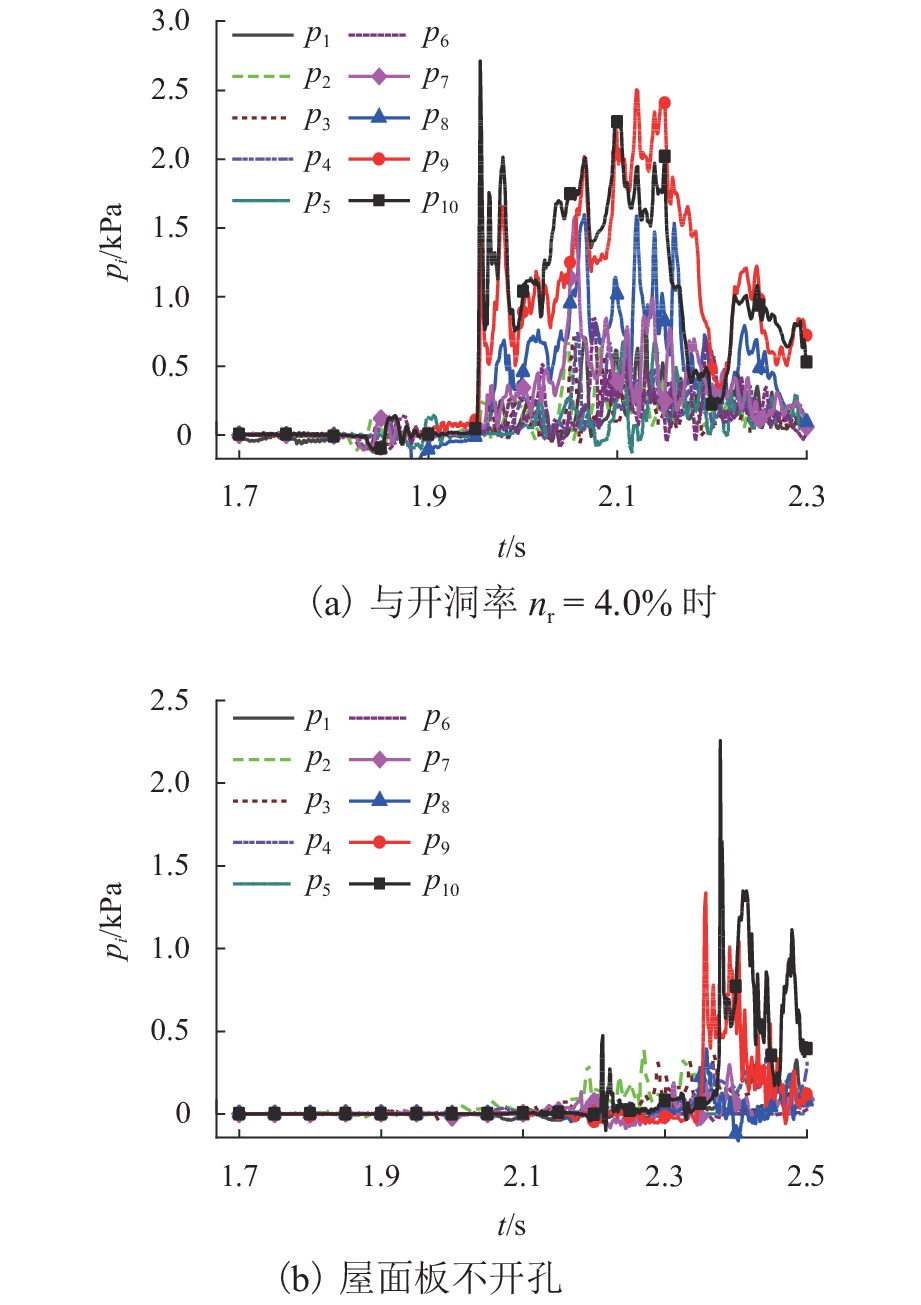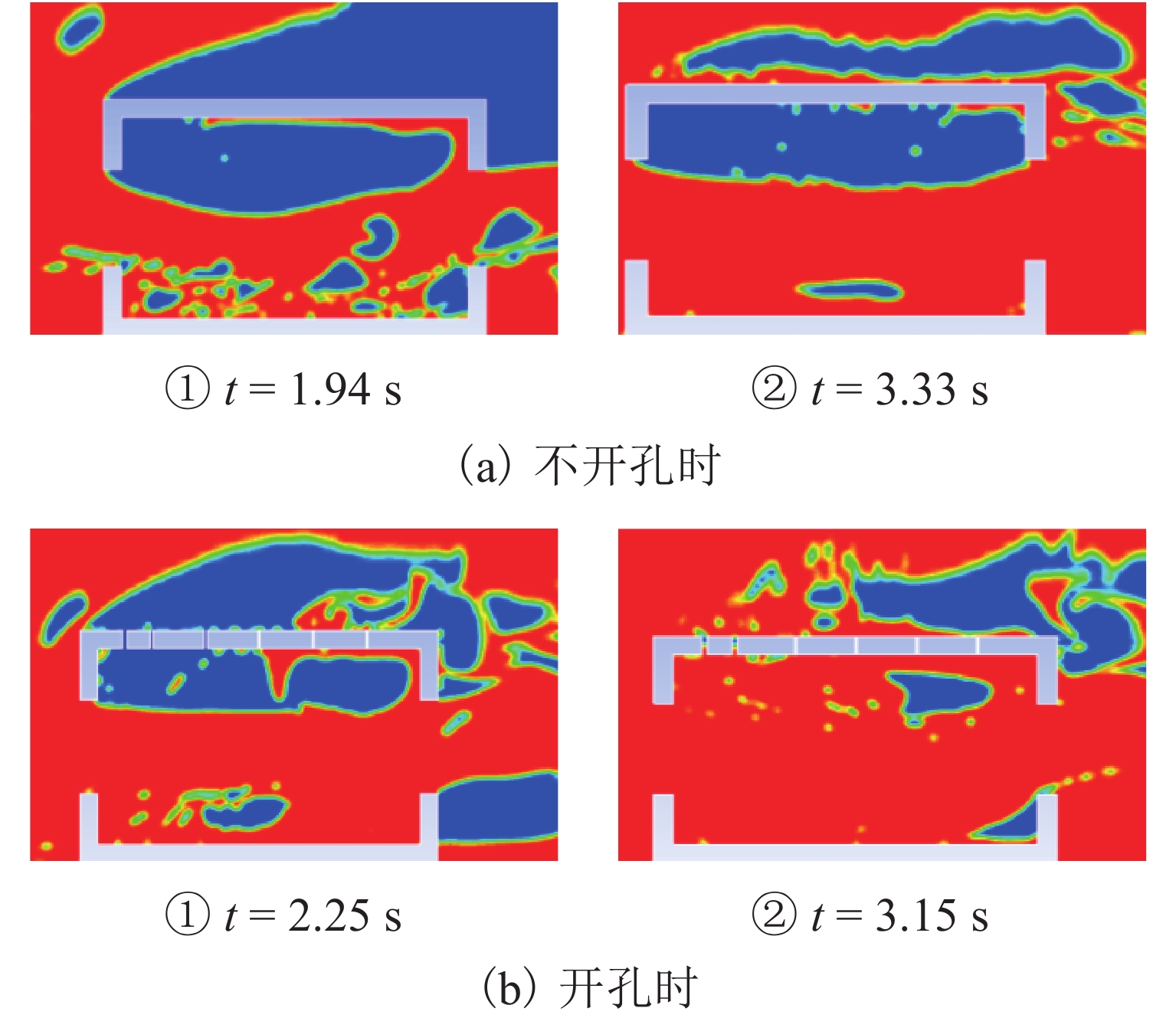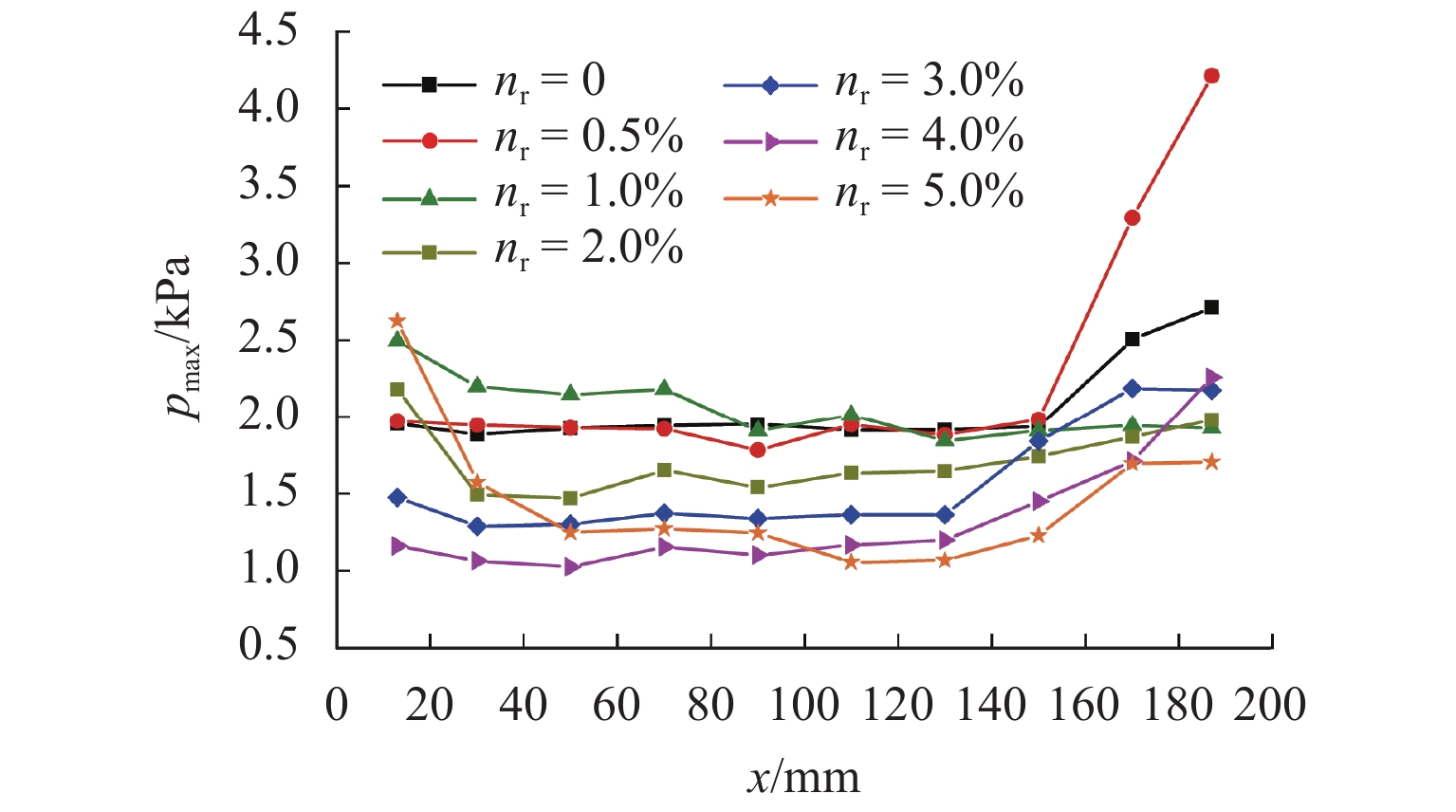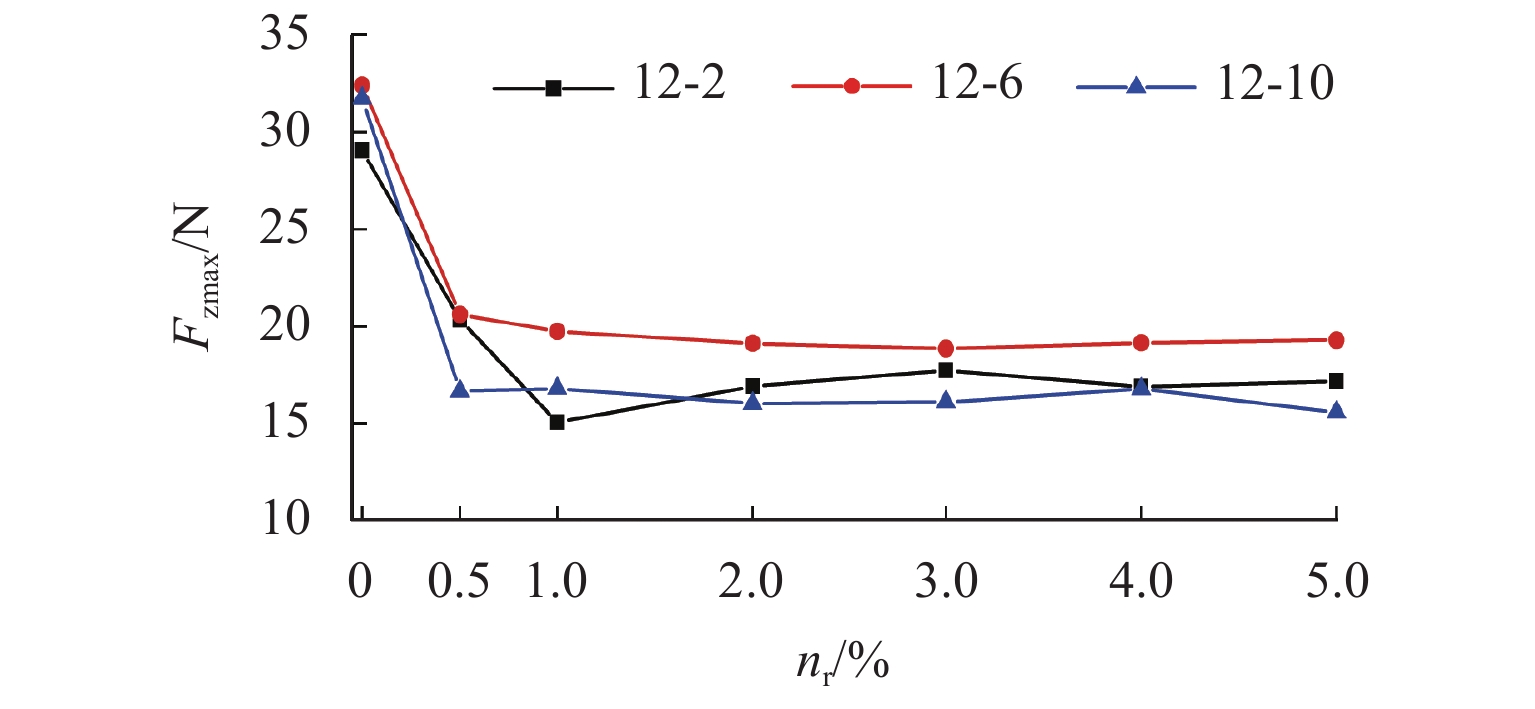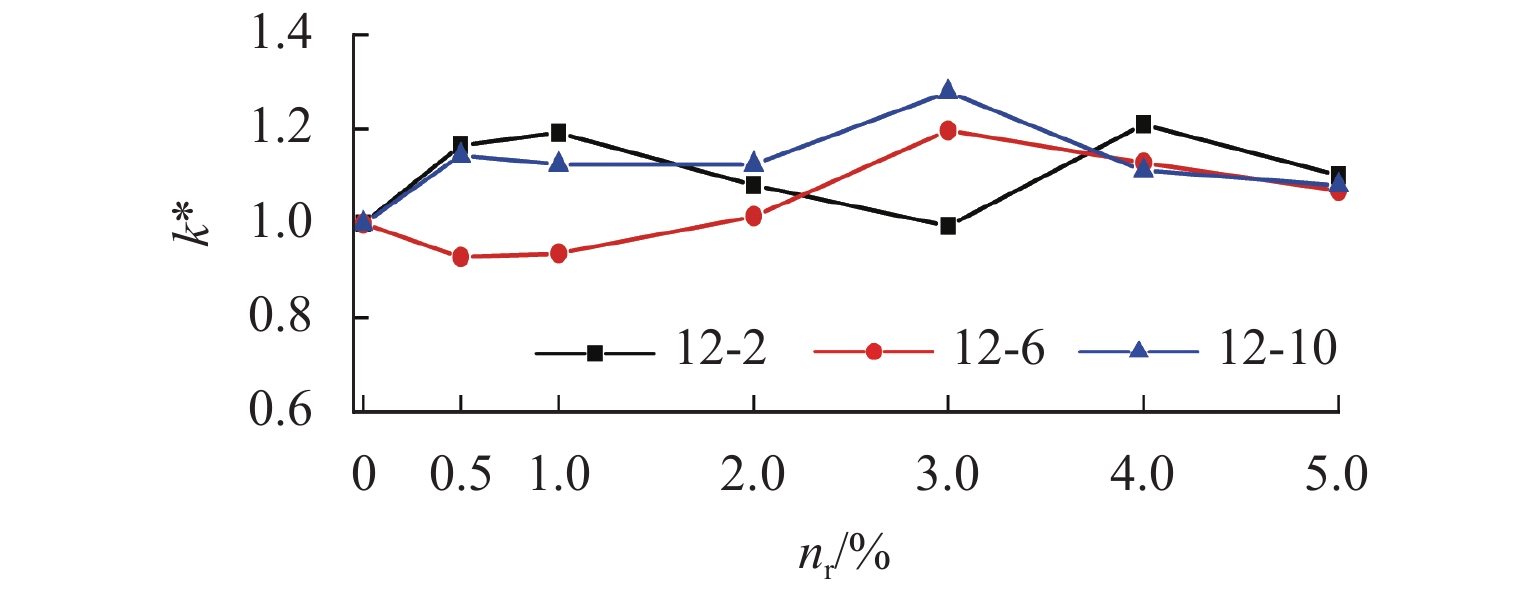Influence of Opening on Tsunami Force on Low-Rise House
-
摘要:
为研究门窗及屋面板洞口对低矮房屋海啸作用力影响,在试验水槽中通过溃坝方式模拟海啸涌波,开展不同来流波高时低矮房屋海啸作用力模型试验. 分析了门窗、屋面板开洞率、开洞位置对低矮房屋海啸力的影响机理和影响规律,提出了开洞率、开洞位置影响系数. 研究结果表明:有门窗洞口时,海啸水平作用力最大值发生在波动段,并且最大值发生时刻随开洞率增大而延后,开洞率越大海啸水平力越小;门窗洞口竖向位置越接近海啸涌波高能区域时,海啸作用力最大值越小;屋面板较小的开孔即可释放裹挟空气,降低屋面板底部压力,减小结构似平稳阶段的竖向力,屋面板开孔能导致结构水平海啸力增大约20%,需要引起重视.
Abstract:In order to study the influence of openings of door, window and roof on the tsunami force on low-rise houses, physical model experiments were conducted under different wave heights of tsunami bores which were generated by dam-break method. The influence mechanisms and rules of the opening rate and opening position were investigated, based on which, the influence coefficients of the opening rate and position are proposed. Results show that an opening on walls makes the peak value of the horizontal tsunami force occur at the fluctuation stage. The occurrence time is delayed and the peak value of the horizontal tsunami force becomes smaller when the opening rate of the walls increases. Also when the opening is closer to the high-energy zone of tsunami bore, the horizontal tsunami force becomes smaller. The openings on the roof can release the entrapped air, thus reducing the pressure on the roof bottom and finally reducing the positive vertical force in the quasi-stable stage. However, the openings on the roof can increase the horizontal tsunami force on structure by 20%, which should receive attentions.
-
Key words:
- opening /
- low-rise house /
- tsunami bore load /
- influence coefficient /
- entrapped air
-
-
[1] 侯京明,王培涛,赵联大. 从2011海啸演习看中国海啸危害[J]. 海洋科学,2013,37(12): 84-89.HOU Jingming, WANG Peitao, ZHAO Lianda. Characterization of tsunami disaster in China from exercise pacific wave 11[J]. Marine Sciences, 2013, 37(12): 84-89. [2] 王培涛,于福江,赵联大,等. 越洋海啸的数值模拟及其对我国的影响分析[J]. 海洋学报,2012,34(2): 39-47.WANG Peitao, YU Fujiang, ZHAO Lianda, et al. Numerical simulation of trans-oceanic tsunami and its impact analysis on Chinese coasts[J]. Acta Oceanologica Sinica, 2012, 34(2): 39-47. [3] 宫文壮. 广东沿海地区村镇低矮房屋台风易损性研究[D]. 哈尔滨: 哈尔滨工业大学, 2009. [4] 陈杰,段自豪,蒋昌波,等. 海啸波引起的近岸房屋局部冲刷试验[J]. 水利水电科技进展,2017,37(1): 33-37,78.CHEN Jie, DUAN Zihao, JIANG Changbo, et al. Experimental study of local scour around seaside houses by tsunami waves[J]. Advances in Science and Technology of Water Resources, 2017, 37(1): 33-37,78. [5] 王铁成,高振兰,赵海龙. 海啸波浪作用下开洞对结构受力性能影响的有限元分析[J]. 建筑结构学报,2014,35(4): 312-317. doi: 10.14006/j.jzjgxb.2014.04.039WANG Tiecheng, GAO Zhenlan, ZHAO Hailong. Finite element analysis of the influence of openings on the mechanical performance of structures under the action of tsunami waves[J]. Journal of Building Structures, 2014, 35(4): 312-317. doi: 10.14006/j.jzjgxb.2014.04.039 [6] YEH H, ROBERTSON I, PREUSS J. Development of design guidelines for structures that serve as tsunami vertical evacuation sites[M]. Washington D. C.: Washington State Department of Natural Resources, Division of Geology and Earth Resources, 2005. [7] RAMSDEN J D, RAICHLEN F. Forces on vertical wall caused by incident bores[J]. Journal of Waterway, Port, Coastal, and Ocean Engineering, 1990, 116(5): 592-613. doi: 10.1061/(ASCE)0733-950X(1990)116:5(592) [8] LUKKUNAPRASIT P, CHINNARASRI C, RUANGRASSAMEE A, et al. Experimental investigation of tsunami wave forces on buildings with openings[C]// Solutions to Coastal Disasters Congress 2008. Hawaii: American Society of Civil Engineers, 2008: 82-93. [9] TRIATMADJA R, NURHASANAH A. Tsunami force on buildings with openings and protection[J]. Journal of Earthquake and Tsunami, 2012, 6(4): 125-129. [10] GHOSH D, MITTAL A K, BHATTACHARYYA S K. Multiphase modeling of tsunami impact on building with openings[J]. The Journal of Computational Multiphase Flows, 2016, 8(2): 85-94. doi: 10.1177/0010836716653881 [11] CHANSON H. Applications of the saint-venant equations and method of characteristics to the dam break wave problem[R]. Brisbane: The University of Queensland, 2005. [12] CHANSON H. Analytical solution of dam break wave with flow resistance: application to tsunami surges [C]//31st IAHR Biennial Congress. Seoul: Korea Water Resources Association, 2005: 3341-3353. [13] ARNASON H, PETROFF C, YEH H, et al. Tsunami bore impingement onto a vertical column[J]. Journal of Disaster Research, 2009, 4(6): 391-403. doi: 10.20965/jdr.2009.p0391 [14] CRESPO A J C, GÓMEZ-GESTEIRA M, DALRYMPLE R A. 3D SPH simulation of large waves mitigation with a dike[J]. Journal of Hydraulic Research, 2007, 45(5): 631-642. doi: 10.1080/00221686.2007.9521799 [15] RAHMAN S, AKIB S, KHAN M T R, et al. Experimental study on tsunami risk reduction on coastal building fronted by sea wall[J]. The Scientific World Journal, 2014(2014): 729357.1-729357.7. [16] MOTLEY M R, WONG H K, QIN X S, et al. Tsunami-induced forces on skewed bridges[J]. Journal of Waterway, Port, Coastal, and Ocean Engineering, 2016, 142(3): 12-24. [17] DOUGLAS S, NISTOR I. On the effect of bed condition on the development of tsunami-induced loading on structures using OpenFOAM[J]. Natural Hazards, 2015, 76(2): 1335-1356. doi: 10.1007/s11069-014-1552-2 [18] WEI Z P, DALRYMPLE R A. Numerical study on mitigating tsunami force on bridges by an SPH model[J]. Journal of Ocean Engineering and Marine Energy, 2016, 2(3): 365-380. doi: 10.1007/s40722-016-0054-6 -




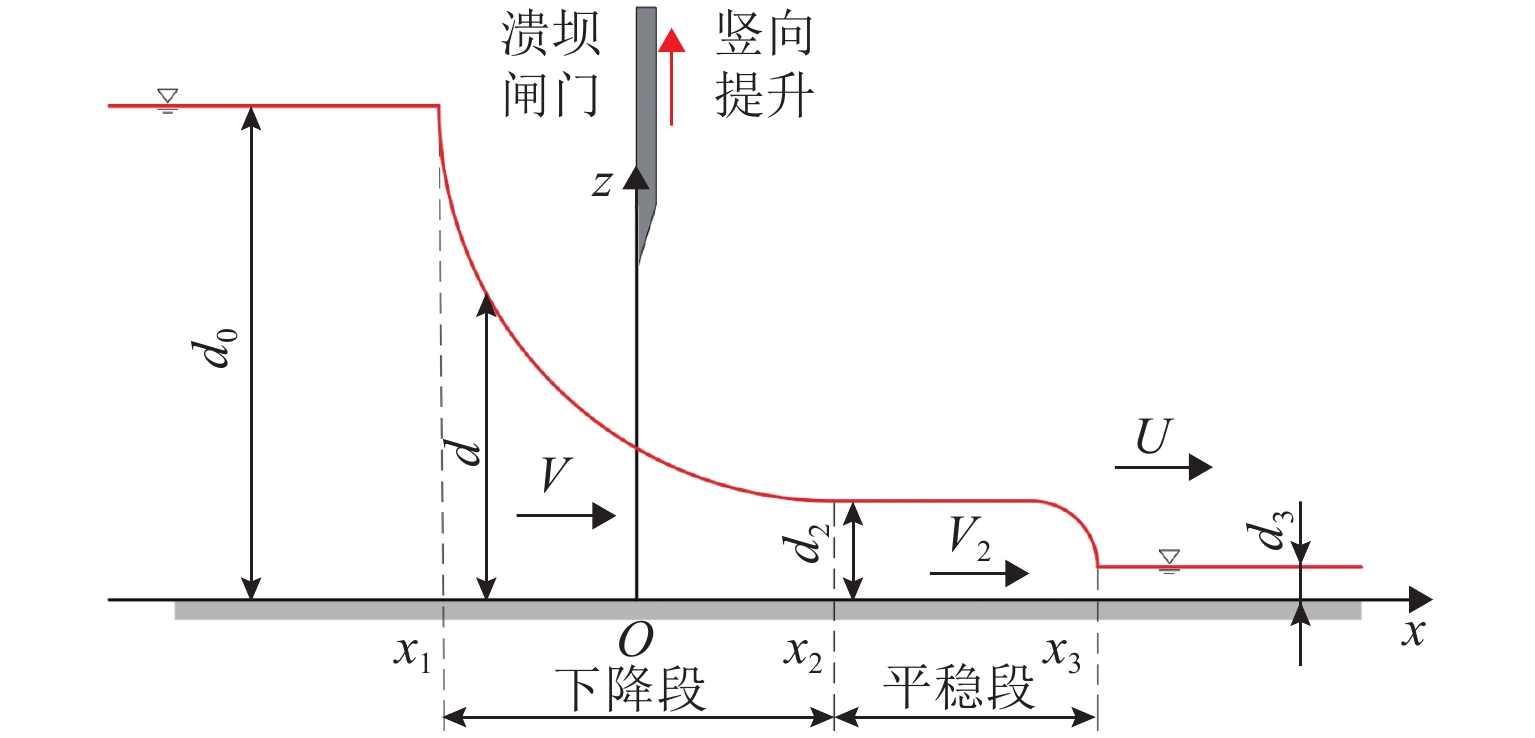
 下载:
下载:

